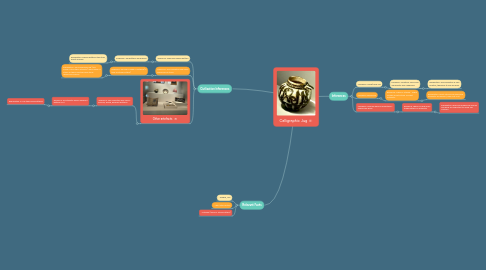
1. Relevant Facts
1.1. - Kashan, Iran
1.2. - Late 12th Century
1.3. - Fritware (Type of Stone Pottery)
2. Inferences
2.1. Inference: Good/lucky jug
2.1.1. Evidence: Incription: Glory and Generosity and Happiness
2.1.1.1. Explanation: The inscription is very positive, therefore it may be good.
2.2. Inference: Expensive
2.2.1. Evidence: Made of Fitware - might include Quartz stone. Ancient Artefacts.
2.2.1.1. Explanation: Quatz stones are expensive. Atrefacts are ancient, may cost a lot.
2.3. Inference: Animals were of importance - specifically birds
2.3.1. Evidence: There is a bird and a snake pattern on artefacts.
2.3.1.1. Explanation: Birds and snakes are animals and birds are important to some Iran cultures.
3. Civilisation Inferences
3.1. Inference: They have skilled potters
3.1.1. Evidence: The patterns are precise
3.1.1.1. Explanation: Precise patterns take time, effort and skill
3.2. Inference: The civilisation had some resources of stone
3.2.1. Evidence: The jug is made of Fritware (a type of stone pottery)
3.2.1.1. Explanation: The calligraphic jug (and some of the other artefacts) were made of stone so there must've been stone resources close by
3.3. Other artefacts
3.3.1. Inference: The civilisation was fancy - precise, skilled, different patterns
3.3.1.1. Evidence: All artefacts have a different pattern on it
3.3.1.1.1. Explanation: In Iran they value patterns
